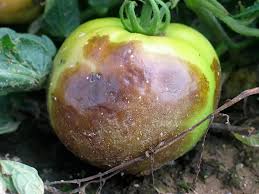Fruit Rot Disease:

The Central Plantation Crops Research Institute (CPCRI), Kasaragod, recently issued an advisory to farmers to control ‘kole roga’ (fruit rot disease) in arecanut plantations.
- Fruit Rot Disease is a plant disease that can cause significant losses for farmers, as it can reduce the quality of the crop and make it unmarketable.
- In some cases, fruit rot can also lead to the death of the plant.
- It is caused by a number of different fungi, bacteria, and viruses, and it can be difficult to prevent and treat.
- Continuous heavy rainfall coupled with low temperature (20 to 23 °C), high relative humidity (>90%), and intermittent rain and sunshine hours favour the occurrence of fruit rot.
- Symptoms:
- Brown or black spots on the fruit
- Softening of the fruit
- Shrivelling of the fruit
- Mould growth on the fruit
- Many different types of fungi can cause fruit rot, but the most common type is Botrytis cinerea.
- This fungus affects a wide range of fruits, including grapes, strawberries, tomatoes, and peppers.
- The fungus enters the plant through wounds in the leaves or fruit lesions, and it proliferates in humid conditions.
- Once established, the fruit infections can spread rapidly through the crop, causing rot.
- The fungi that cause fruit rot can also produce toxins that are harmful to humans and animals.




